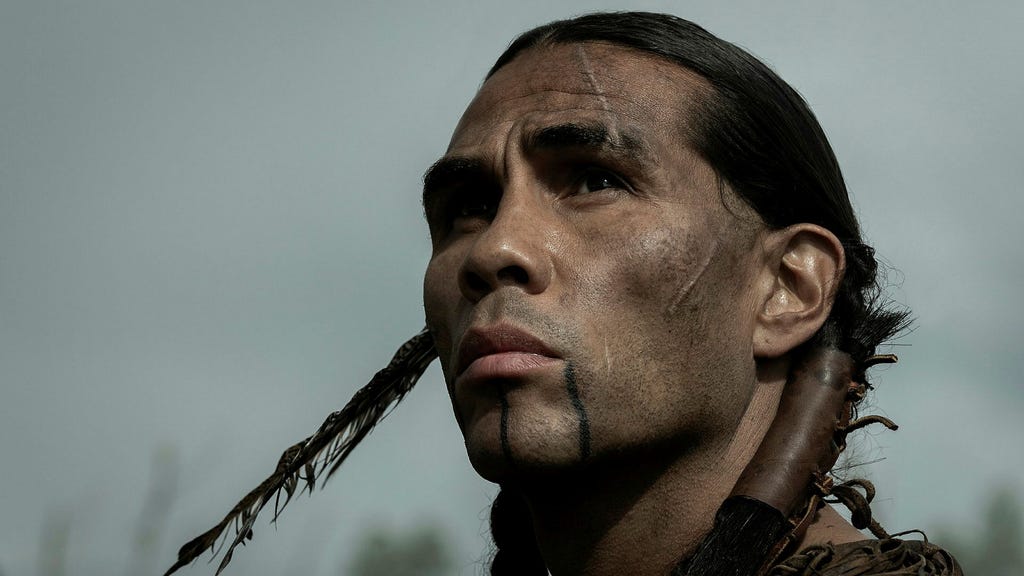Paragraph 1: Deconstructing the Myth of the Wild West
Netflix’s "American Primeval" throws viewers headfirst into the brutal reality of America’s creation, stripping away the romanticized veneer of the "Wild West" conquest to reveal a gruesome skeleton of violence and bloodshed. The series opens with a jarring juxtaposition: axes splitting skulls, guns spitting death, blood and brain matter splattering the air, all set against a slowed-down, melancholic rendition of Woody Guthrie’s "This Land Is Your Land." This ironic soundtrack underscores the brutal conflict between Native Americans, settlers, and Mormons, each vying for control of the land. The series centers on the historical Mountain Meadows Massacre of 1857, where a Mormon militia and Paiute warriors slaughtered a wagon train of settlers, exposing a dark chapter often omitted from popular narratives of westward expansion.
Paragraph 2: The Mormon Militia: A Dark Force in the West
The existence of a Mormon militia, composed of fundamentalists fighting to establish God’s kingdom, or Zion, adds a surprising layer to the familiar Western narrative. These violent extremists, comparable to modern-day terrorists, clashed with the US Army and were caught in a complex conflict with the Shoshone tribe, already decimated by white settlers’ encroachment. The depiction of this three-way struggle highlights the multifaceted nature of the conflict, moving beyond simple good versus evil tropes. The series eschews casting a white actor as a Shoshone warrior, a practice common in older Westerns, acknowledging the problematic nature of such portrayals.
Paragraph 3: A Legacy of Misrepresentation: Hollywood’s Portrayal of Native Americans
The article draws parallels between the portrayal of Native Americans in "American Primeval" and the historical misrepresentations prevalent in classic Westerns. Films like "Apache" (1954) and "Broken Arrow" (1950), while sometimes advocating for peace between whites and Native Americans, still relied on white actors in leading Native American roles. These films, while progressive for their time, perpetuated a limited and often stereotypical image of Indigenous peoples. The article highlights the tendency to depict Native Americans as either savage antagonists easily dispatched by heroic cowboys or as noble savages living in harmony with nature, both failing to capture the complexity and diversity of Indigenous cultures.
Paragraph 4: Shifting Perspectives and the Evolution of Representation
The influence of the 1968 social movements brought about a shift in Hollywood’s approach to representing marginalized communities. Revisionist Westerns like "Soldier Blue" and "Little Big Man" attempted to present Native American perspectives, often focusing on white characters who adopted Indigenous ways of life. While these films offered a more sympathetic portrayal of Native Americans, they sometimes fell into the trap of portraying them as idealized figures or relying on the "white savior" narrative. Even Kevin Costner’s "Dances with Wolves," while featuring Native American actors, faced criticism for perpetuating this trope.
Paragraph 5: Language, Authenticity, and the Search for Accurate Representation
Beyond the visual representation, the article also addresses the often-overlooked aspect of language. Hollywood’s historical tendency to homogenize Native American languages, reducing them to simplistic grunts and clichés, is highlighted. Citing Lily Gladstone’s comments on the linguistic diversity among Indigenous tribes, the article emphasizes the importance of accurate language representation in achieving authentic portrayals. Films like "Black Robe" and "Killers of the Flower Moon" are lauded for their efforts to incorporate authentic Indigenous languages, demonstrating a growing awareness of the importance of linguistic accuracy in storytelling.
Paragraph 6: "American Primeval" and the Ongoing Quest for Indigenous Perspectives
While acknowledging that "American Primeval" still operates from a white perspective, given its creators, the article credits the series for its nuanced portrayal of the Shoshone. The series allows its Native American characters to be complex individuals, capable of both love and brutality, reflecting the realities of a people facing oppression and dispossession. The series also indicts the Mormon militia and even the French as perpetrators of violence, expanding the narrative beyond the typical cowboys-versus-Indians trope. While progress has been made in representing Native Americans on screen, the article concludes by emphasizing the continued need for stories told from genuinely Indigenous perspectives, moving beyond the limitations of the traditional Western narrative and giving voice to the experiences and perspectives of those whose history has so often been misrepresented.














